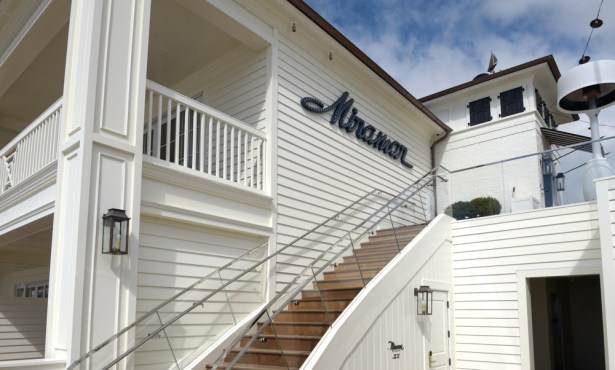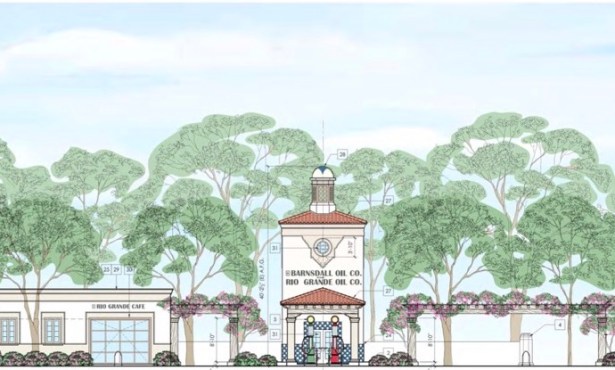Height Limits Elude GabFest
Shorter Building Advocates
As high-powered gabfests go, the July 18 assembly of movers and shakers at the Cabrillo Arts Pavilion was about as impressive as they come. There to discuss whether downtown Santa Barbara should lower its building height limit were every member of the City Council, the Planning Commission, the Architectural Board of Review, and the Historic Landmarks Commission, as well as some of Santa Barbara’s best-known architects, lobbyists, and community advocates. All have axes to grind when it comes to what kind of growth should be allowed during the next 20 years, but all that sequestered brainpower veered off the point. Lost in the shuffle of butcher paper and squeaky magic markers was the subject that brought everyone together in the first place: height limits.
The question was broached earlier this year by Councilmember Brian Barnwell, Planning Commissioner Harwood White, and former commissioner Bill Mahan, who suggested the height limit for the city’s El Pueblo Viejo-Santa Barbara’s central business district-should be reduced from its current 60 feet to 40 feet. They argued this reduction would protect the historic character of downtown Santa Barbara from taller buildings like the two large structures being built on Chapala Street. This group suggested that new height limits need to be written into the city’s charter by a vote of the people. That notion sparked a heated, three-hour back-and-forth before the City Council in May, in which developers, architects, and affordable housing advocates countered that taller buildings were more energy-efficient. They also insisted that new restrictions would impede affordable housing efforts. Some suggested the whole thing was a political stunt hatched by Councilmember Barnwell, who is up for re-election this fall. And many critics noted that Barnwell, Mahan, and White had voted for some of the very projects to which they now object.
Last week’s Wednesday gathering was held to determine just how problematic city officials and architectural watchdogs find big buildings to be. Some see no problem. City Councilmember Grant House, for example, dismissed the concern about “canyonization” as “fear mongering.” However, Barnwell argued against this notion and advocated putting the matter on a ballot for voters to decide. While some at the meeting praised the city’s Urban Design Guidelines, a 100-page book of architectural dos and don’ts, Barnwell-who for many years served on the Planning Commission-said the current guidelines don’t make it any easier for planners to just say no. “I don’t trust the process because I’ve been part of the process,” he said. Barnwell was equally skeptical that City Hall’s contortions on behalf of affordable housing were bearing much fruit. “We’re bending over backward for housing, but when it comes to the city’s historic romance and character, we’re being skinned alive, big-time,” he said. Despite his beliefs, Barnwell conceded that the soonest he could envision such a ballot battle would be next June or November.
It was clear from the tenor of discussions that there’s significant interest in “de-coupling” parking from housing, meaning that the city’s requirement of two parking spaces per housing unit-at least downtown-is likely to undergo serious scrutiny as City Hall embarks on its General Plan update in the months ahead. Likewise, developers may find themselves pushed to build their parking underground to soften the visual impact of new development.
Supporters of a new height restriction, like Mahan, dismissed the meeting as a step in the right direction but perhaps one that didn’t go far enough, noting that he was impressed by the good intentions but also predicting they wouldn’t last. “This will fade in time,” Mahan said. “There will be new people appointed, and as the real estate economy picks up, we’ll see a string of tall buildings come roaring through.”
Some, however, are trying to find middle ground. One idea is for City Hall to impose strict affordability conditions on any new structures that exceed the proposed new height restrictions. Ironically, the person who voiced that opinion most conspicuously at the meeting was developer Dave Bermant, whose new mixed-use building at the corner of Chapala and De la Guerra streets helped ignite the current controversy. Bermant acknowledged that he would have designed the building differently if he had it to do over again. “I would have designed it with more setbacks,” he said. “But at the same time, 30 percent of the units are affordable.”



